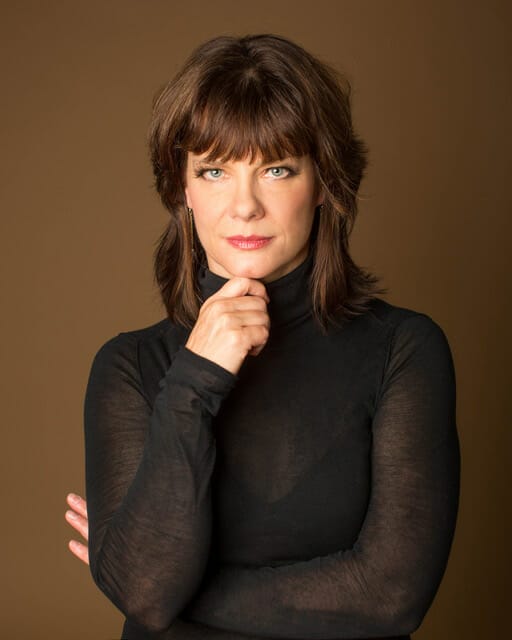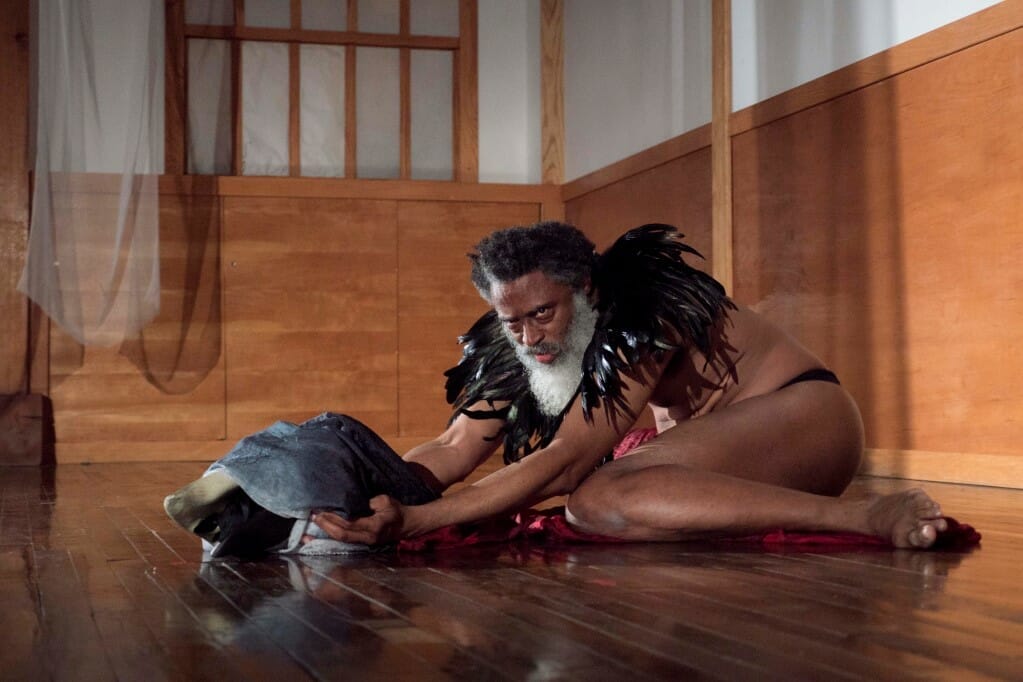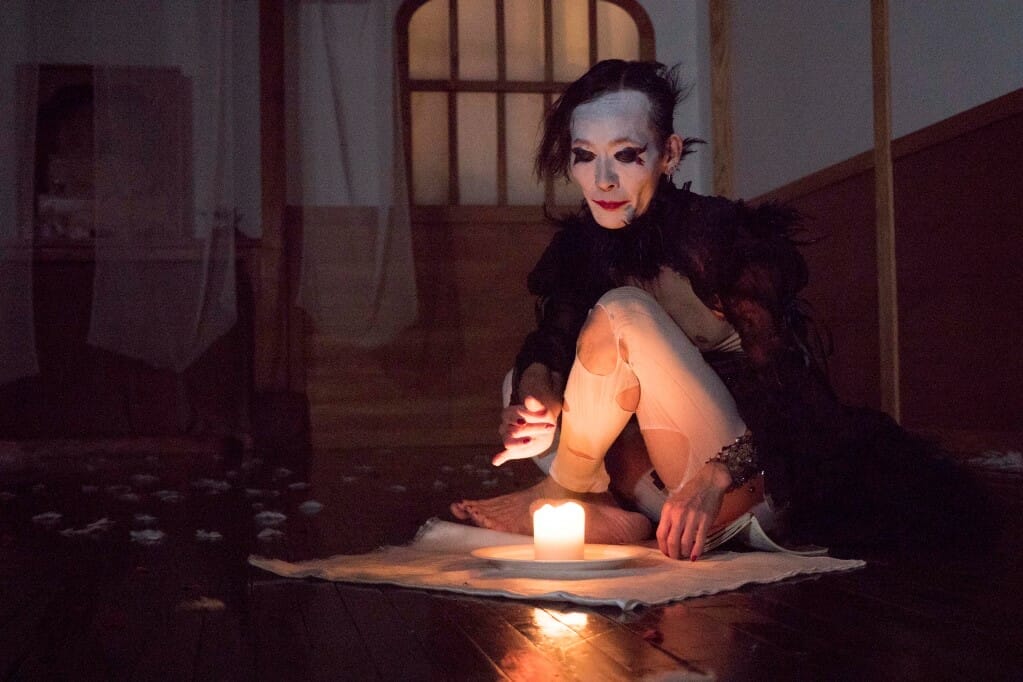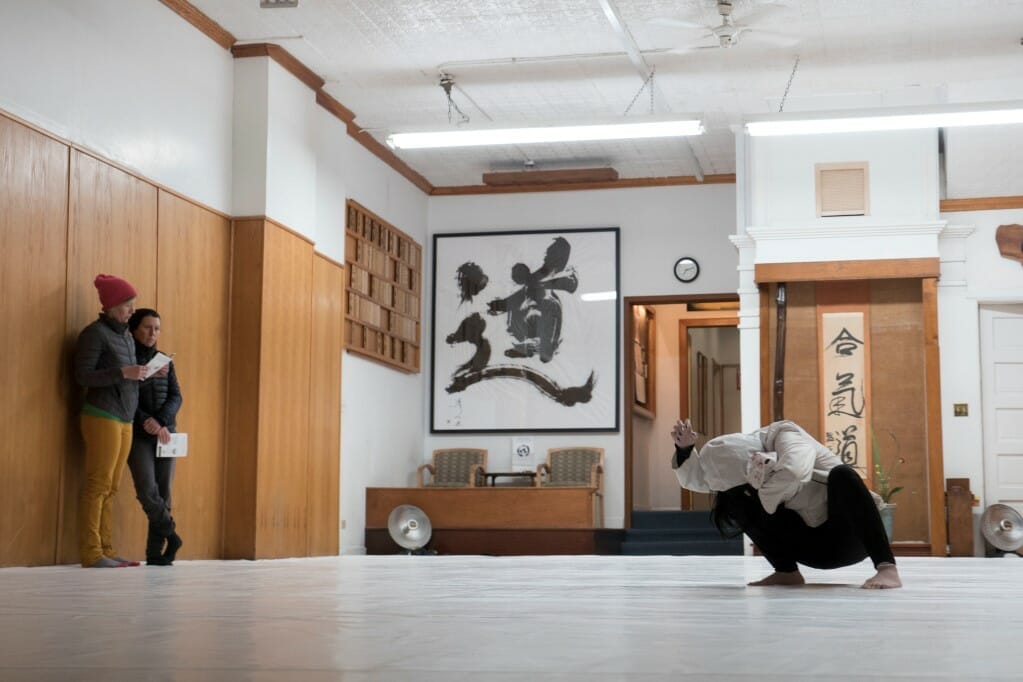Butoh Chicago Brings Us to Another World
On a particularly wet and windy Saturday evening an audience dutifully removed their shoes, traversed across the Aikido mats and made their way upstairs to the calming, tranquil space on the second floor of the Japanese Cultural Center. We were there to witness the final performances of Sara Zalek’s Battles: SS3 Post Butoh Fest. As viewers took their seats in the serene atmosphere it was easy to leave the torrential rains and challenges of the day at the door in anticipation of an evening of Butoh inspired performance works.
Butoh is a form of dance originating in Japan after World War II. Generally agreed to have been created by Kazuo Ohno and Tatsumi Hijikata, the discipline emphasizes a search for the soul and an acknowledgement of both darkness and light existing simultaneously, both dependent on, and complimentary of, the other. Since its inception Butoh has spread from its origins in Japan throughout the world, has been studied and performed by many, many different artists, and as it has evolved, has given rise to Post Butoh, an evolution of the original form that takes into account the shifts in time and artistic perspective that are part of an ever changing world.
Local and International Butoh Artists
Sara Zalek, founder of Butoh Chicago, organized and curated Battles:SS3 Post Butoh Festival. The Festival featured both local and international artists and aimed to “transform our collective fear and the need to fight though concepts of competition, war and victory.” Local artists performing on April 29 included, Holly Chernobyl, Kiam Marcelo Junio and Allen Turner followed by the premiere of international Butoh artist Ken Mai. Each performer brought a unique interpretation of how to “fight for light…using Butoh dance as a way to uplift the spirit.”
Holly Chernobyl opened the evening with Haikai. She began entering the space wearing a white hooded sweatshirt and black pants. She proceeded to struggle with her attire, grappling with each item of clothing and stripping it off as if it were a layer of skin and finally ending on the floor seemingly released from her trappings. Kiam Marcelo Junio’s work Requiem.Regenesis followed. They began walking slowly down the aisle entering the performance area wearing a red tunic and a transluscent white cape, their face covered in gold leaf to the glorious strains of Tomaso Albinoni’s Adagio in G Minor for Organ and Strings. Joy, pain and sadness were all contained in their breathing body as they moved forward. At one point they ascended a platform covered in luxurious cloth and held up a mirror reflecting the light, Junio’s face, and the faces of the audience. Allen Turner’s #Tengu Dreams showcased the performer entering while wearing a large bird’s head, his graying beard emerging from the bottom of the mask. As he pulled off the mask a red scarf continued to cover his face, which he slowly pulled it off as he descended toward the earth.
Requiem for a Flower
The final performance of the evening was the US premiere of Ken Mai’s Requiem for a Flower. The work is an abstract depiction of the life and death of a flower. According to the program notes, “the lifetime of a flower is short lived. However, in a short period of several days it is as eternal as the universe expressing beauty in the moment.”
Mr. Mai entered wearing a black corset and flowing skirt, his face and arms covered in the traditional white make-up worn for Butoh performances. He began by running in circles, his feet barely skimming the floor, spreading white feathers all around while Mozart’s Requiem played loudly to accompany the action. As the movement slowed one noticed Ken’s red fingernails as he made his way towards a candle and a book. Once there he slowly picked up the book, opened it, lit a page on fire, burned it for a moment, then closed the book depriving the flame of oxygen and thereby extinguishing it. He followed this image with a long phrase of meticulous, precise, arm and hand gestures that gradually grew into larger movements that engulfed his back and torso. Those movements conjured images of ballet, a struggling bird, a restless body and arcing abstract lines in space. The viewer was free to link all of the moments together in a moving, poetic, painting representing life and death, sorrow and happiness, action and stillness. As the arm and torso movements faded Ken began to wipe away his make-up. In what became a long and ceremonious transformation, Ken smudged and smeared his make-up, blurring the colors from distinctive white, black and red, to gray. The flower became a person, the performer became human. And then, human being as performer, and performer as human being, moved into the audience gently touching and embracing those who had shared the space throughout the evening. The completely organic transition brought the performance full circle from life, to death, to life again, conveying hope and joy in a very natural and moving way. Ken Mai took us on a journey through a world that he conjured, then wiped away, and then concluded by quietly and simply revealing our shared humanity through our shared witnessing of his work.
Butoh Chicago has ongoing workshops and performances that you can learn more about by visiting their website.
Learn more about dance by seeing dance through dancers eyes in the Picture This Post series, “Choreographers’ Eyes - Dancers Explain Dance”. Watch this video preview of the story here—
Find more Picture This Post dance reviews in the latest roundup — CHOREOGRAPHERS WE LOVE. Also, watch a short preview video here —






